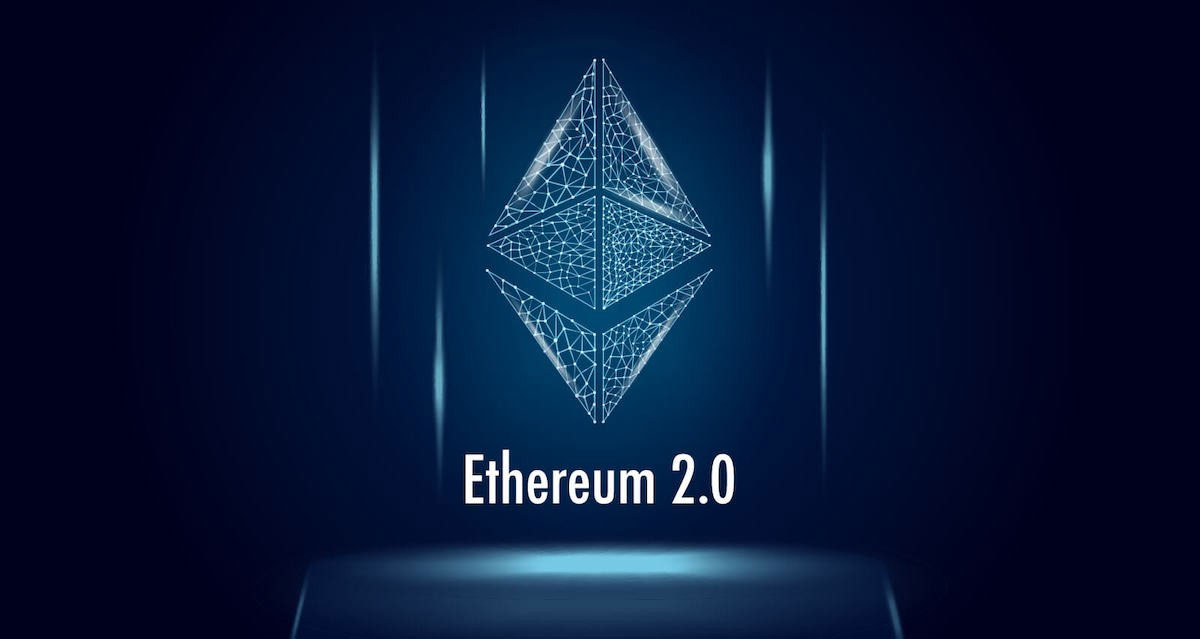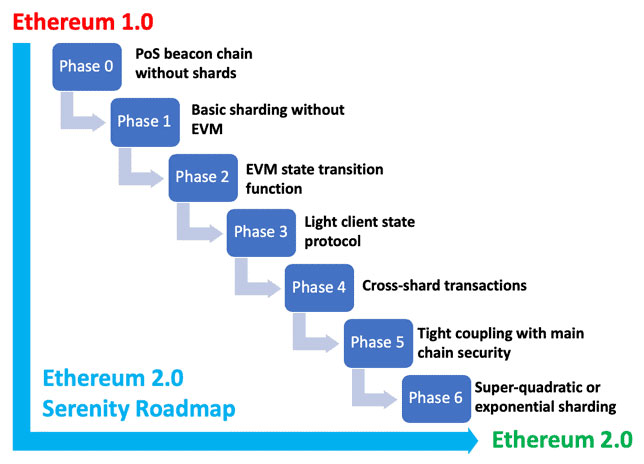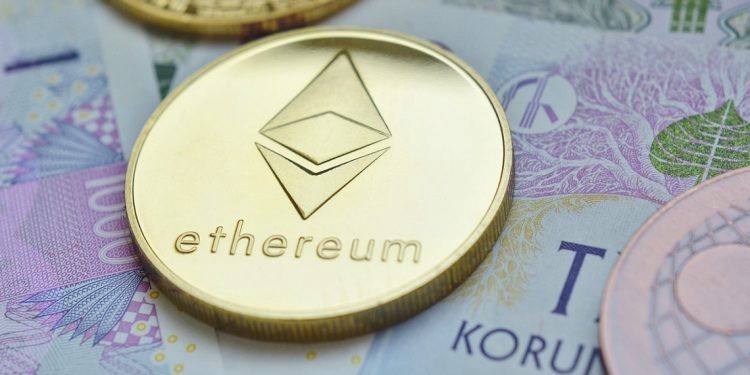
Ethereum 2.0 is perhaps one of the most anticipated releases planned for the future of this cryptocurrency and it has such a big impact on the crypto industry. The update is supposed to rework the network and drastically improve the system’s already existing features and even add new ones to it. In this article, we are going to break down the roadmap for the upgrade that is Ethereum 2.0, including the major effects it is going to have on the economy and the cryptocurrency market with the introduction of a brand-new ETH 2.0 token.
What is Ethereum 2.0?
Ethereum 2.0, also known as Serenity to some people online, is literally an upgrade to the current Ethereum Network which is designed to improve the efficiency, speed and scalability of the network for faster and better transactions. This particular update is going to rebuild the whole network which takes Ethereum to new heights as the platform will be able to validate more transactions more efficiently which alleviates traffic congestion and high prices of gas on the cryptocurrency’s network. Even though Ethereum 2.0 is referred to as an upgrade, it is more similar to a complete overhaul of the current system.
Once the final phase of the said upgrade is completed and the goals are finally achieved, Ethereum will finally become the transparent and open network for DeFi – Decentralized Applications and Finances – it was always dreaming to be.
How will Ethereum 2.0 be released?
Ethereum 2.0 involves sharding in order to reduce the high prices of gas and improve network bandwidth drastically. This will most definitely make the transaction fees cheaper and therefore, you will be able to use the platform’s various services, such as sending Ethereum tokens and even interacting with smart contracts with much less money required.
Besides that, there will be a lot of fundamental changes in the economy as well. Ethereum 2.0 aims to support staking nodes and let its users earn ETH as passive income. Ethereum 2.0 is the work and effort of thousands of developers combined together during years of work.

The team of developers have planned to do the Ethereum 2.0 upgrade in 3 different phases. The first one of these three stages is phase 0 (it is quite common for developers to count from 0 and not from 1 like the rest of us do). Over the past years, Ethereum has been criticised many, many times by its opponents for its high transaction fee and having a really fragile network during peak times but will Ethereum 2.0 be enough to fix this major problem? Is this project going to scale in order to support the massive number of DeFi and blockchain games being created? We will cover the timeline provided for Ethereum 2.0 upgrade shortly.
Right now, Ethereum 2.0 is being tested with the Medalla Testnet. Medalla Testnet is a multi-client test in which more than 20,000 people from all over the world are participating. This is officially the final test required before Ethereum 2.0 phase 0 is ready to be deployed.
Key Features of Ethereum 2.0

Ethereum 2.0 is on its way and will change the current economics. The update will in fact erase the concept of mining we know right now so any Ethereum miner is going to retire when the Ethereum 2.0 update actually hits. Here are the key features that the new and upgraded platform will bring and you must be aware of:
1. Staking
Ethereum’s current network is proof of work but with the upgrade, the platform will move on to the Proof of Stake model. Proof of Stake was designed as an alternative which was faster and more convenient. With Proof of Stake, miners are able to mine coins based on how many coins they are holding at the time. This is great because the Proof of Work consensus needs a huge amount of energy and money.
2. Sharding
Ethereum 2.0 aims to scale its capacity in a more efficient way with the help of a simple method called sharding. Now, this method is pretty common among a number of newer cryptocurrencies that make use of Proof of Stake models since it allows for much more scalability without any major sacrifice to decentralization and / or security. In this technique, Ethereum will be divided into 18 Shards after the upgrade and all 18 of these Shards will operate at the same time. As a result of this, efficiency of the system will improve by a lot.
What state is Ethereum 2.0 currently at?
As we have already stated in the last section, Ethereum 2.0 is under its final testnet referred to as Medalla. This testnet is much different from the ones before in the sense of being open to the public. It also allows the users to experience any of the 5 available clients, including Sigma Prime’s Lighthouse, PegaSys’ Teku, Prysmatic Labs’ Prysm, Status’ Nimbus, and ChainSafe’s Lodestar, in order to connect to Ethereum’s network and use it to communicate with one another.
Besides that, because the testnet is public, the developer teams will not centrally coordinate the network validators. So far, the testnet has more than 30,000 validators participating and more than 946,000 ethers have been staked. The team plans to run this testnet until the end of this year and as we’ve already established, the deadline of this testnet will be when phase 0 of Ethereum 2.0 is going to be dropped. Right now, it is expected to have the ETH 2.0 mainnet released in November. The important thing to remember here is that ETH 2.0 clients are not going to be developed by a single party; instead, Ethereum 2.0 will have a robust ecosystem for the developers with 5 different client releases.

If you look at the diagram provided above, we are currently working through Ethereum 2.0 phase 0. People have shown great reception to the testnet and the overwhelming number of more than 30,000 validators have already signed up and allocated their resources and assets to help with the Beacon Chain testnet. Vitalik Buterin – the father of Ethereum and the person behind the main idea of the concept, has stated that Beacon Chain has not seen its Final test yet, so we are expecting even more participation from the community in the following months.
Phase 0: Beacon Chain
Phase officially started with the launch of Beacon Chain. The goal of this phase is to provide randomness and proof for a shard block. When phase 0 is launched, Ethereum 2.0’s new token, ETH2 gets released. With the help of a registration contract, users of the old Ethereum have the option to convert their coins to ETH2 at a 1 to 1 ratio. The smart contract can effectively burn the ETH you were keeping in your wallet from the original Ethereum platform. Also, the community validators are able to stake 32 ETH2 on validator nodes.
Phase 1: Shard Chain
Phase 1 aims to let Ethereum scale immensely with the use of shards. The network will be split up into 64 shards in this phase. Not to mention that all of these shards are able to work at the same time. This means they will have the task of processing transactions and will be able to process computation. Phase 1 enables the shards to communicate with one another with the help of crosslinking.
Phase 2: Execution Engine
Phase 2 is supposed to bring about the final and the main model of Ethereum 2.0. This phase is the one in which the existing proof of work (legacy) comes together with the newer proof of stake model. From here on, Ethereum will officially merge into Ethereum 2.0 and so begins a new era for the cryptocurrency platform that is Ethereum.
How will the price of Ethereum be affected?

Many guess that the new upgrade will lead to an increase in Ethereum’s price. This is mainly because Ethereum and its Decentralized Finance network will become a lot more practical on the average person who might not be as rich as some others. Right now, the only ones who are able to take the massive transaction costs are those with a lot of money in their pockets. It is highly likely that transaction fees on Ethereum drop to a certain point where everyone is able to use the platform and not just the rich people.
The Final Takeaway
Many people live in countries where the infrastructure to provide identification to the citizens does not exist. Without the infrastructure, it is impossible to get a bank account and therefore you may not be able to use any modern payment applications. Ethereum’s decentralized finance system enables even these people to find access to investments, loans, bank accounts, financial opportunities and much more. With low transaction fees and also a low barrier for entry, Decentralized Finance or DeFi has the potential to go all the way and grow significantly. This will also cause Ethereum’s price to grow along with it. Of course, all of these are fully dependent on the success of Ethereum 2.0.
What is Ethereum
Ethereum Network
Medalla Testnet
Key Features of Ethereum
Graphic Photo World
Frontend Free Code
Code Free Tutorial
CSS Free Code
PHP Free Code



 Home
Home How to use
How to use Sitemap
Sitemap About Us
About Us Suggested
Suggested Privacy Policy
Privacy Policy